
For cannabis plants, the recommended light cycle can vary depending on the stage of growth. Here are some general guidelines:
Seedlings and Cuttings: During the seedling stage, it’s common to provide 18 to 24 hours of light per day. This extended light cycle promotes vigorous growth and helps establish healthy root systems.
Vegetative Stage: During the vegetative stage, cannabis plants focus on leaf and stem development. It’s typically recommended to provide 18 hours of light followed by 6 hours of darkness per day. This light cycle encourages vegetative growth and allows the plants to rest during the dark period.
Flowering Stage: To initiate flowering in cannabis plants, a light cycle with 12 hours of light and 12 hours of uninterrupted darkness per day is commonly used. This 12/12 light cycle is crucial for triggering the plants’ flowering response and promoting the development of buds.
It’s important to maintain a consistent light schedule throughout each stage of growth to avoid stressing the plants. Automated timers or programmable controllers can help ensure that the grow lights are turned on and off at the desired times.
Keep in mind that these are general recommendations, and there may be variations depending on the specific cannabis strain, desired growth characteristics, and environmental conditions. Some growers may also experiment with different light cycles to manipulate the plants’ growth patterns or optimize certain traits. Always monitor your plants closely and adjust the light cycle if necessary based on their response and overall health.
The PPFD (Photosynthetic Photon Flux Density) requirement for cannabis can vary depending on the stage of growth and the specific strain being cultivated. Here are some general guidelines:
Seedlings and Cuttings: During the early stages of growth, cannabis seedlings and cuttings require lower light intensity. A PPFD range of around 100-250 µmol/m²/s is typically sufficient to support their initial growth and root development.
Vegetative Stage: In the vegetative stage, cannabis plants require higher light intensity to promote robust leaf and stem growth. Aim for a PPFD range of approximately 300-600 µmol/m²/s during this stage. Some growers may provide even higher intensities, up to 800 µmol/m²/s, to encourage compact and bushy growth.
Flowering Stage: Once cannabis plants enter the flowering stage, they require even higher light intensity to support bud development. Aim for a PPFD range of approximately 600-1000 µmol/m²/s or higher during flowering. Providing higher light intensities can help maximize bud production and overall yield.
It’s important to note that these PPFD ranges are general recommendations, and the ideal range can vary depending on factors such as the specific strain, environmental conditions, and the grower’s goals. Some experienced growers may make adjustments based on their experience and the specific characteristics of the plants they are cultivating.
To accurately measure PPFD, it’s recommended to use a quantum PAR meter or a light meter specifically designed for horticultural applications. This allows you to assess the light intensity directly at the plant canopy level, ensuring you are providing the appropriate amount of light for optimal cannabis growth.
The best grow light spectrum for cannabis depends on the specific stage of growth and the desired outcome. Here are some general guidelines:
Vegetative Stage: During the vegetative stage, cannabis plants benefit from a spectrum rich in blue light (400-500nm) and cool white light. This spectrum promotes healthy leaf and stem development, as well as overall plant structure. Blue light encourages compact and bushy growth, preparing the plants for a robust flowering stage.
Flowering Stage: As cannabis plants transition to the flowering stage, they require a spectrum rich in red light (600-700nm) and warm white light. Red light stimulates bud production, enhances resin production, and supports overall flowering development. Including some far-red light (700-800nm) can also promote flowering and improve flowering efficiency.
Full Spectrum: While specific blue and red wavelengths are crucial for cannabis growth, providing a full spectrum that includes a range of wavelengths across the visible spectrum (400-700nm) is generally beneficial. Full spectrum lighting closely mimics natural sunlight and ensures that plants receive a comprehensive mix of wavelengths for optimal growth and development.
LED grow lights are popular among cannabis growers due to their ability to provide customizable spectrums. With LED lights, you can adjust the ratio of red to blue light to suit the different growth stages of cannabis plants. Some LED grow lights also offer additional spectrums, such as ultraviolet (UV) and infrared (IR), which can have specific benefits for plant development and resin production.
It’s important to note that the ideal spectrum can vary depending on the specific strain, environmental conditions, and personal preferences. Some growers may experiment with different spectrums or ratios to achieve specific growth characteristics or desired cannabinoid profiles. Always monitor your plants closely and observe their response to the light spectrum to make any necessary adjustments.

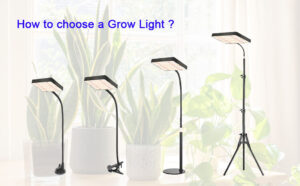
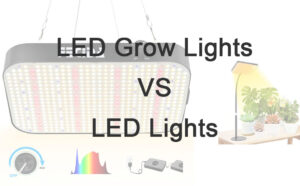
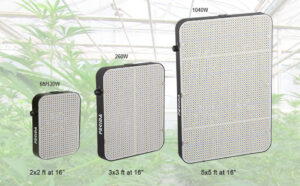
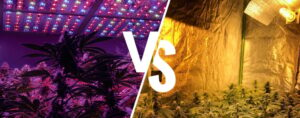
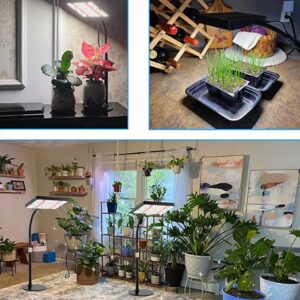
When you place an order in Check Out page, select “Create an account“, system will automatically create an account for you and send the account info to your Email Address.
